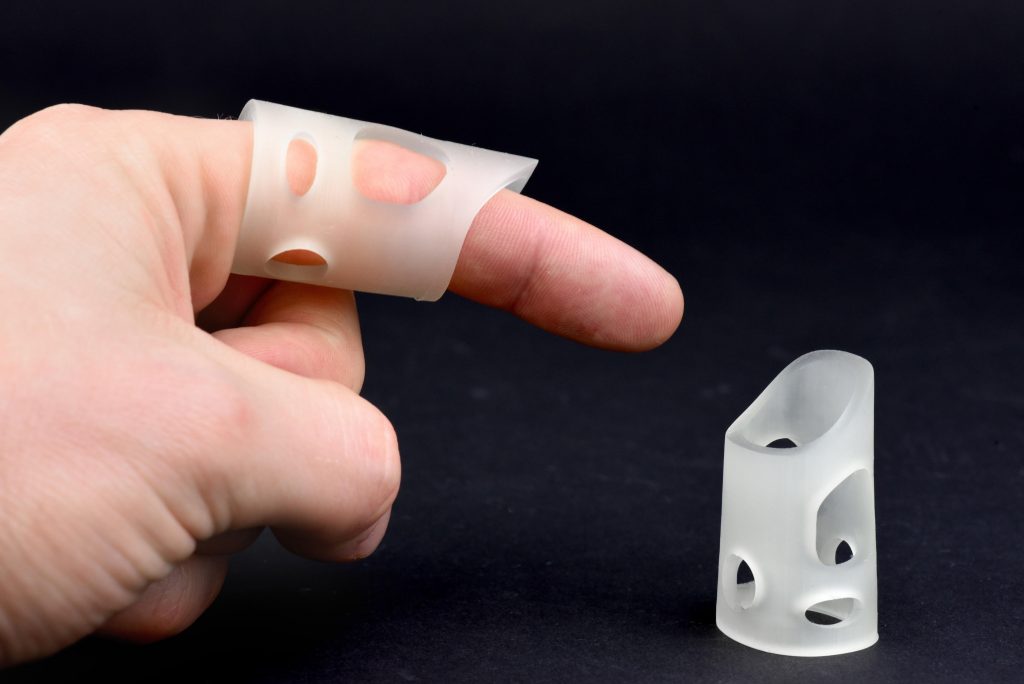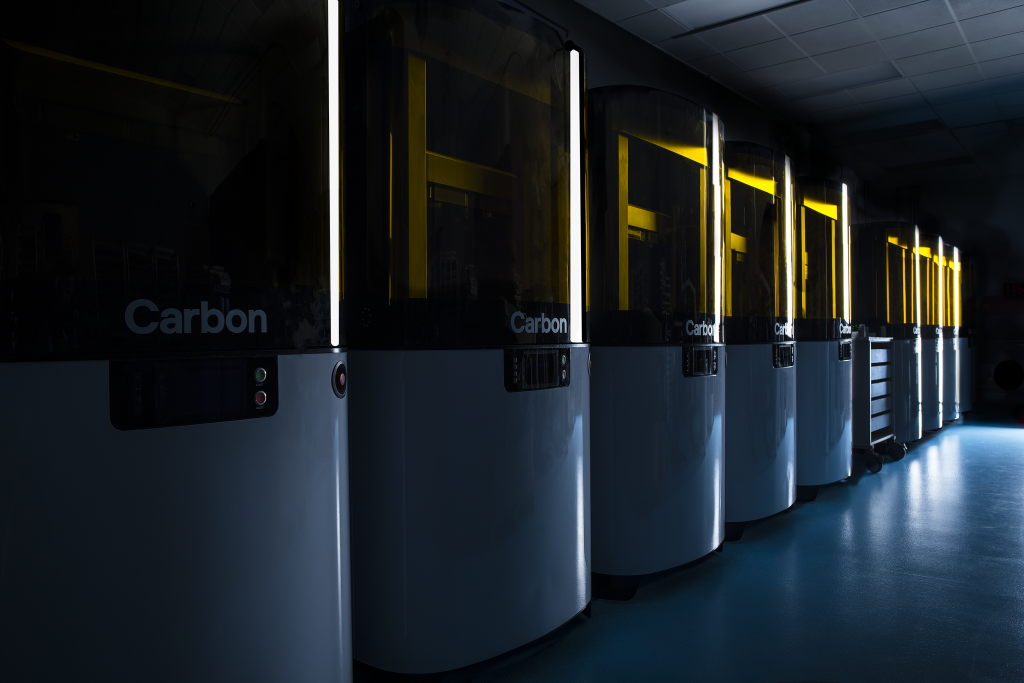Next month experts will gather in California for the BIG IDEAS for UV+EB Technology Conference. The event brings together leaders and enterprises from across the materials industry to discuss applications and science with a view on developments expected in the next decade.
This year BIG IDEAS includes a dedicated additive manufacturing track with leaders from across academia and industry bringing their insight to attendees.
Speakers include experts from Formlabs, Carbon, UCLA, Sartomer, Ford and Fast Radius. I caught up with Ford’s technical leader additive manufacturing, the director of materials at Origin and the Past-President of RadTech International – producers of the BIG IDEAS event.

The near and long term future of additive manufacturing
Dr. Mike J. Idacavage has over three decades experience working in the UV curing industry. As past-president and chair of the AM committee at RadTech international, the association for UV and EB technology, he has drawn on this experience, bringing together experts from across the field for BIG IDEAS. Dr. Idacavage explains, “While many conferences tend to be a mix of new breakthroughs and incremental improvements, the focus for BIG IDEAS was to curate an AM session that really is a window to the near and long term future of AM based on UV curing/liquid resin technologies.”
The focus at BIG IDEAS is on the most significant developments for additive manufacturing.
“We wanted speakers that would discuss innovations in raw materials, new UV curing technologies, formulations, equipment and key end users,” says Dr. Idacavage. Rapidly the initial plans for a single session dedicated to AM grew into full day program – with additive influence also spreading to other tracks such as emerging technologies.

Driving AM towards production at Ford
Ellen C. Lee Ph.D. is the Technical Leader of Additive Manufacturing Research at the Ford Motor Company. Lee has spent two decades at Ford working with advanced polymer and composite materials, previously she has conducted research at UC Berkeley and taught polymer classes at Wayne State.
Lee will be speaking on the topic of driving additive manufacturing towards production of end-use parts at BIG IDEAS, and providing insights gained from her substantial real-world experience. “Challenges in using additive manufacturing in the automotive industry arise when scaling processes for high volumes,” says Lee. Continuing she notes, “In order for the automotive industry to produce more AM end-use parts, we need to develop automotive grade materials for AM, increase the throughput rates, and reduce process and material costs.” But what are the additive manufacturing technologies most suited to the automotive industry?
“There are a vast number of applications for AM in automotive and most AM technologies have a place to address each use case. For series production parts, technologies with open materials platforms that offer high throughput are the best suited.”
Open Additive Production
Open materials are central to Californian company Origin’s plans of making 3D printing a viable mass production method. Stephanie Benight Ph.D. is Director of Materials at Origin and well placed to provide insight into the key trends in additive manufacturing in 2019.
“We believe 2019 will see an explosion in new material chemistries coming to market with novel applications for industries that have been slow to adopt additive for end-use parts,” says Benight. “These industries demand specific properties and rigorous quality requirements that many existing industrial 3D printers can’t address. Origin’s technology gives users the control required to meet those demands.”
Part of that technology at Origin is called programmable photopolymerization or P^3. Benight explains, “P^3 enables voxel level control over the print process and integrates with onboard sensors, giving users the ability to truly customize how a part prints and performs. This has implications for industries that require robust manufacturing data and integration with existing software solutions.”
During BIG IDEAS 2019 Benight will provide discuss ways to accelerate open additive production. Attendees can expect to, “gain a clear understanding of how an open material development strategy accelerates advances in photopolymer technology and increase the number of materials that become viable for commercial applications,” says Benight.
“Participants will also learn the steps to validate chemistries to print consistently and repeatedly. The presentation will describe how Origin iterates quickly with material partners and then open up to the audience for a discussion on common challenges in development of photo-enabled chemistries.”
Dr. Idacavage says that the focus on photopolymer materials and technology and such a “deep dive into the science and applications of photopolymer 3D Printing/Additive Manufacturing” makes the BIG IDEAS conference unique in comparison to other events. “By listening to and interacting with organizations like Formlabs, Ford, Fast Radius, Origin, Sartomer, Allnex, NIST, UCLA, and more, I hope that the attendees will discover the new idea, meet the right contact or get inspired to make the next generation Big Idea that will continue to transform the AM industry,” he says.
It is testament to the additive program at BIG IDEAS that the speakers are also excited about the event. “I’m looking forward to learning more about emerging UV/EB technologies and about robust materials development for AM technologies that can be applied to automotive applications,” says Ford’s Lee.
What’s next for additive manufacturing with photopolymers?
I asked Dr. Idacavage for his perspective on the most interesting areas of additive manufacturing. He believes that two of the most exciting fields in photopolymer development work, “are improvements to the raw materials used in the resin formulations and work being done in formulation labs to creatively combine different chemistries to achieve performance not yet obtainable from a single class of UV reactive materials.”
“On the raw material side, there is fascinating work being done in other applications that combines the benefits of traditional UV curable chemistry with that of other systems such as inorganic/organic hybrids,” he says.
“My Big Idea would be to combine new generation organic/inorganic hybrid systems with state-of-the-art formulation work to create AM liquid materials that replicates or improves on the performance of a wide range of useful commercial plastic materials. This will allow companies who are currently using injection molding to explore the benefits of AM without suffering from any loss of performance of the manufactured part.”
Dr Idacavage acknowledges that this target is extremely challenging but “results are being reported at conferences such as BIG Ideas that clearly show that the cured performance properties are being expanded to the levels required by the end use.”
If you want to learn more about what the future holds for AM from leading experts then the BIG IDEAS for UV+EB Technology Conference will take place on March 19 and 20, 2019, in Redondo Beach, California. Visit the BIG IDEAS conference website to learn more.
Make your nominations for the upcoming 3D Printing Industry Awards 2019.
Want the latest news in 3D printing? Subscribe to the free 3D Printing Industry newsletter, follow us on Twitter and like us on Facebook.
Looking for a job or need to find additive manufacturing experts? Visit 3D Printing Jobs to continue the search.



